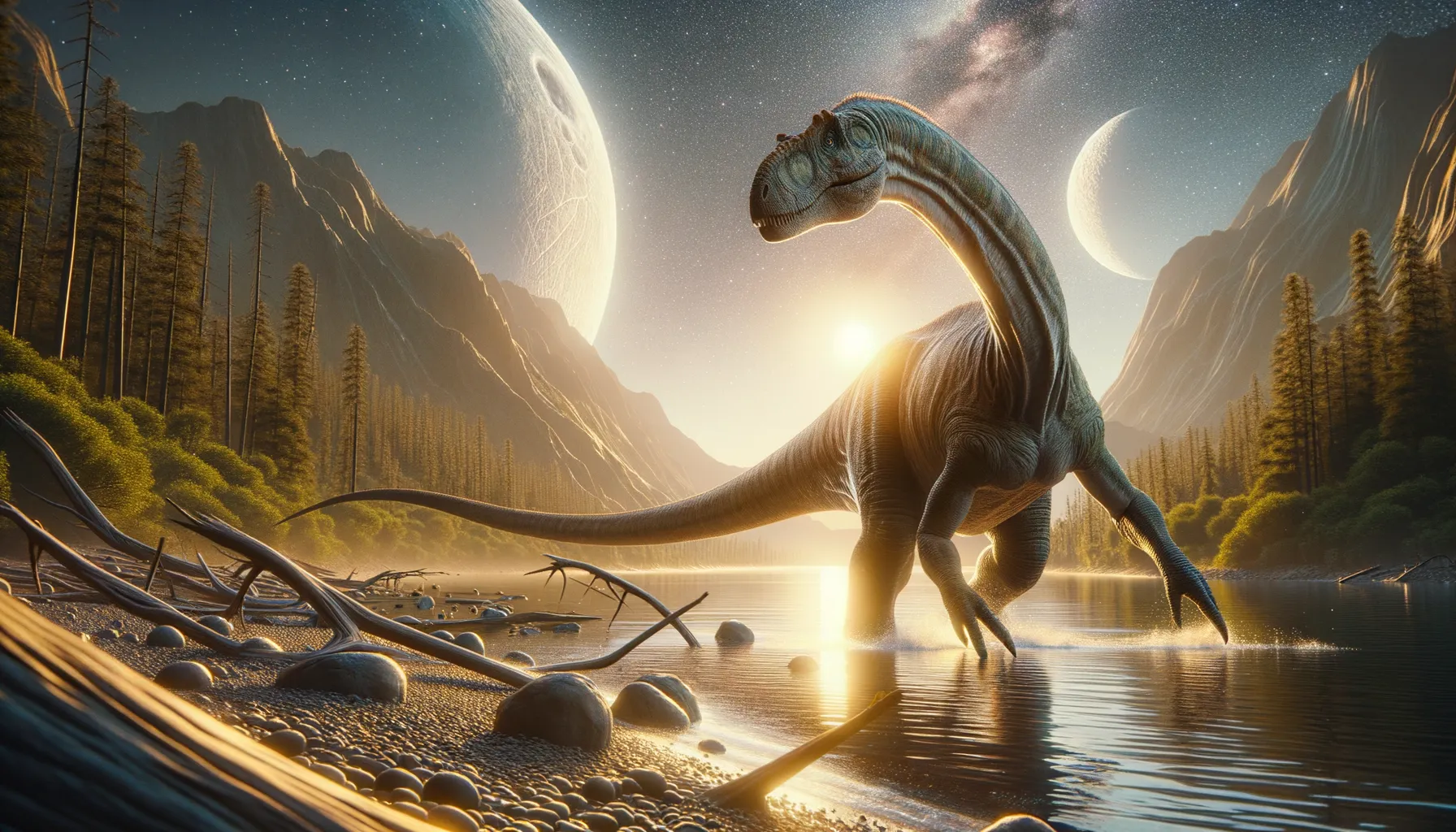
Gannansaurus
A gentle giant of the Cretaceous Era.
Period
Cretaceous
Length
Approximately 15 meters in total length.
Height
Around 5 meters tall at the shoulder.
Weight
Estimated to be around 10 metric tonnes.
Gannansaurus is a genus of sauropod dinosaur from the Late Cretaceous period, known primarily from fossils found in what is now China. This dinosaur belonged to a group characterized by their large size, long necks, and herbivorous diet. Though details are limited due to fragmentary remains, Gannansaurus helps fill the gaps in our understanding of sauropod diversity in Asia during its time.
Diet
Gannansaurus, like other sauropods, was herbivorous. It fed on large quantities of plant matter, using its long neck to reach leaves on tall trees or sweeping the ground for low-lying vegetation.
Hunting
As a herbivore, Gannansaurus did not exhibit hunting behaviors. It would have spent much of its time searching for food across vast areas to sustain its massive size.
Environmental challenges
During the Cretaceous, Gannansaurus faced challenges such as climate fluctuations and vegetation changes. It needed to migrate to new areas as food sources were depleted. Additionally, it had to be aware of predatory threats from large theropods that coexisted in its environment.
Speed
Likely slow-moving, similar to other sauropods.
Lifespan
Estimated around 70 to 100 years.
First discovery
Discovered in Gannan, Jiangxi Province, China in 2001.
Fun Facts
- Gannansaurus is a plant-eating dinosaur that roamed the Earth during the Cretaceous period, about 100 million years ago.
- Fossils of Gannansaurus were discovered in China, offering valuable insights into the diversity of sauropod dinosaurs in Asia.
- Gannansaurus was a long-necked dinosaur, similar to its more famous cousin, the Brachiosaurus.
- It is named after the Gannan region in southern China, where its fossils were found.
- Gannansaurus would have lived alongside a variety of other dinosaurs, including both plant-eaters and meat-eaters.
- The discovery of Gannansaurus helps paleontologists understand the migration patterns of dinosaurs across ancient landmasses.
- Despite being enormous, Gannansaurus likely had a relatively small brain compared to its body size.
Growth and Development
Gannansaurus likely experienced rapid growth in its early years, a characteristic common among sauropods, which enabled it to reach adulthood quickly. Once mature, its growth would have slowed significantly, contributing to its long lifespan. Its bones would continue thickening throughout its life, supporting its massive frame.
Habitat
Gannansaurus lived in a semi-arid climate with access to abundant vegetation, including forests and open plains. These environments provided excellent conditions for its herbivorous lifestyle. Seasonal changes may have forced it to adapt to periods of abundance and scarcity.
Interaction with other species
Gannansaurus coexisted with a variety of other dinosaurs, including small herbivores and large predators. Its massive size likely deterred most predators, although juvenile Gannansaurus would have been more vulnerable. It may have engaged in mixed-species herds for protection.
Natural lifespan
In the wild, Gannansaurus could live up to 100 years.
Reproduction
Gannansaurus reproduced by laying eggs, typically in communal nesting sites to provide some protection for the vulnerable young. The hatchlings were independent from a young age, left to grow and fend for themselves shortly after birth.
Social behaviour
Gannansaurus may have exhibited some form of social behavior, possibly traveling in groups to safeguard against predators. Communication could have taken the form of vocalizations or movements to coordinate in searching for food or during migration.
Fossil locations
Fossils of Gannansaurus have been primarily discovered in the Gannan region of Jiangxi Province, China. These discoveries consist of fragmentary remains that provide insights into the diversity of Late Cretaceous sauropods in Asia. Further fossil findings could help clarify its classification and ecological role.
